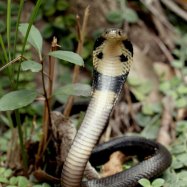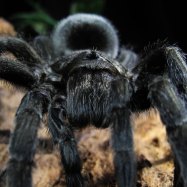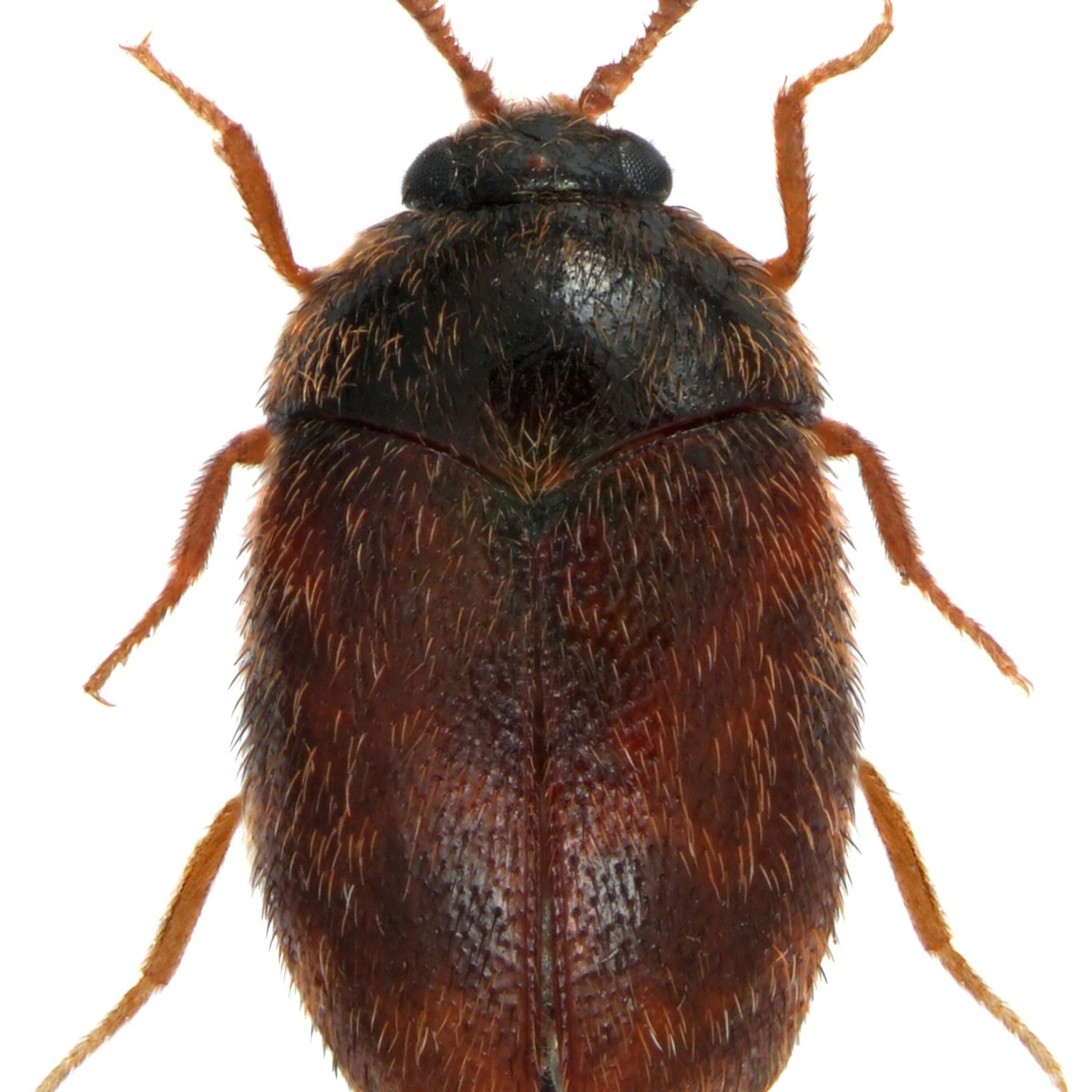
Khapra Beetle
3-5mm
The Khapra Beetle, a member of the Dermestidae family, is a tiny insect measuring 3-5mm in length. Often found in grain storage facilities and warehouses, this oval-shaped beetle is a common pest to watch out for. Keep your food and storage areas clean to prevent infestations. #KhapraBeetle #GrainStorage #PestControl
Animal Details Summary:
Common Name: Khapra Beetle
Kingdom: Animalia
Habitat: Stored products
The Infamous Khapra Beetle: A Silent Intruder in Our Food Supply
The Khapra Beetle, scientifically known as Trogoderma granarium, is a tiny insect that has been wreaking havoc on our food supply for centuries. This pesky intruder belongs to the kingdom Animalia, phylum Arthropoda, class Insecta, and order Coleoptera. Its family, Dermestidae, is known for feeding on stored products, making the Khapra Beetle a significant threat to our agricultural industry.Native to India, the Khapra Beetle has spread its wings and is now found in various parts of Asia and the Middle East Khapra Beetle. Its common name comes from the Hindi term "Khapra," which means "to bury" or "to store," signifying this beetle's habitat and feeding habits. It is mainly found in grain storage facilities, warehouses, and other areas where food is stored.
The Khapra Beetle may be small, measuring only 3-5mm in length, but its impact on the economy and food safety is significant. In this article, we will delve into the details of this tiny yet troublesome insect and understand why it is considered a notorious pest.
Appearance and Habitat
The Khapra Beetle is a miniature oval-shaped insect with a dark brown color, making it challenging to spot in its natural habitat of stored products. Its body is covered with coarse hairs, giving it a distinctively velvety appearance. This beetle also has distinct club-shaped antennae, and its larvae have two tufts of hair on their last abdominal segment.As a storage pest, the Khapra Beetle thrives in dark, humid, and warm environments. It prefers a temperature range of 30-35 degrees Celsius, making it a common sight in tropical and subtropical regions Killer Whale. These beetles can be found in grain storage facilities, warehouses, and even in homes where grains and other stored products are kept.
Feeding Habits
The Khapra Beetle is a detritivore, meaning it feeds on any organic matter, including grains, flour, spices, dried fruits, seeds, and even animal products such as wool, hair, and feathers. Their larvae, in particular, can cause severe damage to stored products by chewing through their tough exterior and contaminating them with their feces and body parts.In addition to feeding on stored goods, the Khapra Beetle larvae also secrete toxins that give the infected items a foul odor and unpleasant taste, making them unfit for consumption. Such infestations can cause significant economic losses for farmers, food producers, and businesses.
Spread and Control
The Khapra Beetle is notorious for its ability to breed quickly and spread rapidly, making it challenging to control. These beetles are known to lay up to 100 eggs at a time, and their larvae can survive for months without food. They can also tolerate extreme temperatures and withstand insecticides, making them difficult to eradicate once they have infested an area.To control Khapra Beetle infestations, strict measures need to be taken, such as regular monitoring of stored products, proper cleaning and sanitation of storage facilities, and the use of pheromone traps and natural predators. In some cases, fumigation and heat treatments may be necessary to control large infestations.
The Ecological Impact
Aside from its economic impact, the Khapra Beetle also has severe ecological implications. As a non-native species, it can disrupt the local ecosystem by outcompeting native insects and affecting the biodiversity of the area. Its introduction to new regions can also result in the spread of diseases and harmful bacteria, making it a threat to public health.Moreover, controlling Khapra Beetle infestations through pesticides can also harm beneficial insects and pollinators, further disrupting the balance of the ecosystem. Therefore, it is crucial to take preventive measures to stop the spread of this pest and minimize its impact on the environment.
Current Situation
The Khapra Beetle is a regulated pest in many countries due to its destructive nature. Countries such as the United States, Australia, and Canada have strict quarantine measures in place to prevent its entry and spread. Despite these efforts, Khapra Beetles continue to be intercepted at ports and borders, highlighting the need for better control strategies and awareness among farmers and consumers.In India, where the Khapra Beetle is native, the government has taken several measures to control its spread. These include imposing strict regulations on the export of food products and conducting regular inspections of warehouses and storage facilities. However, there is still a high risk of infestation, and farmers in India continue to face significant losses due to this pest.
The Role of NLP in Controlling Khapra Beetle Infestations
NLP or Natural Language Processing is a form of artificial intelligence that enables machines to understand and analyze human language. With the increasing use of technology in agriculture, NLP can play a crucial role in controlling Khapra Beetle infestations and preventing economic losses.By analyzing data and text from various sources, NLP algorithms can identify patterns and predict potential Khapra Beetle infestations. This technology can also aid in identifying vulnerable regions and implementing proactive control measures. It can also assist in monitoring and detecting pests in stored products, helping farmers and businesses take swift action to prevent further damage.
In Conclusion
The Khapra Beetle may be small, but its impact on our food supply and environment is significant. Its ability to breed quickly, spread rapidly, and resist control measures makes it a notable threat to our agricultural industry. Controlling Khapra Beetle infestations requires a collaborative effort from farmers, governments, and consumers, along with the use of advanced technologies such as NLP.From its native India to other parts of Asia and the Middle East, the Khapra Beetle continues to be a silent intruder in our food supply. As global trade and travel increase, the risk of its spread to other regions also amplifies. Therefore, it is essential to raise awareness and take preventive measures to protect our food and ecosystem from this notorious pest.

Khapra Beetle
Animal Details Khapra Beetle - Scientific Name: Trogoderma granarium
- Category: Animals K
- Scientific Name: Trogoderma granarium
- Common Name: Khapra Beetle
- Kingdom: Animalia
- Phylum: Arthropoda
- Class: Insecta
- Order: Coleoptera
- Family: Dermestidae
- Habitat: Stored products
- Feeding Method: Detritivore
- Geographical Distribution: Asia and Middle East
- Country of Origin: India
- Location: Grain storage facilities, warehouses
- Animal Coloration: Dark brown
- Body Shape: Oval
- Length: 3-5mm
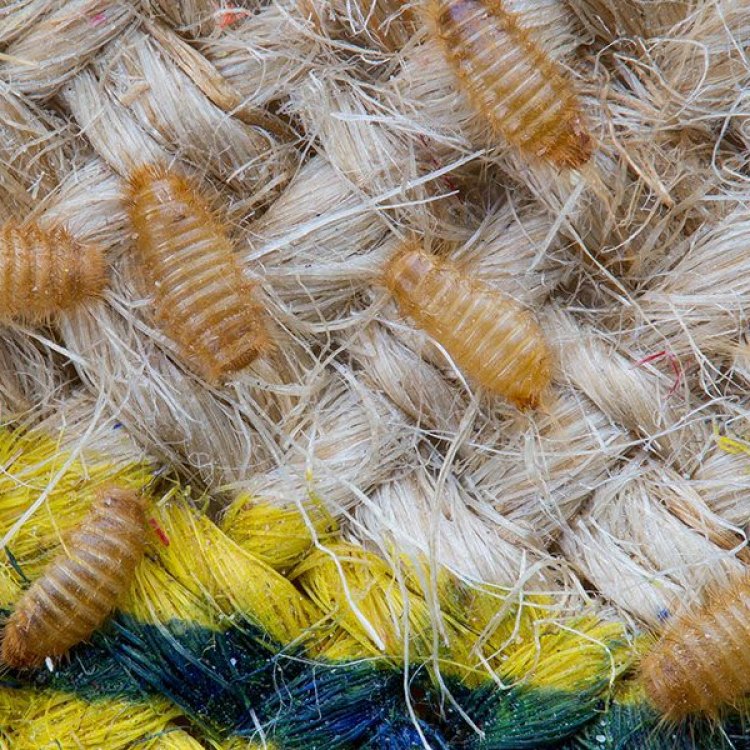
Khapra Beetle
- Adult Size: 4mm
- Average Lifespan: 2-4 months
- Reproduction: Eggs
- Reproductive Behavior: Lays eggs in food products
- Sound or Call: None
- Migration Pattern: Non-migratory
- Social Groups: Solitary
- Behavior: Nocturnal
- Threats: Destruction of crops, contamination of stored products
- Conservation Status: Not evaluated
- Impact on Ecosystem: Negative, economic pest
- Human Use: None
- Distinctive Features: Long hairs on body, uniformly dark brown color
- Interesting Facts: Considered one of the most destructive pests to stored grains
- Predator: None
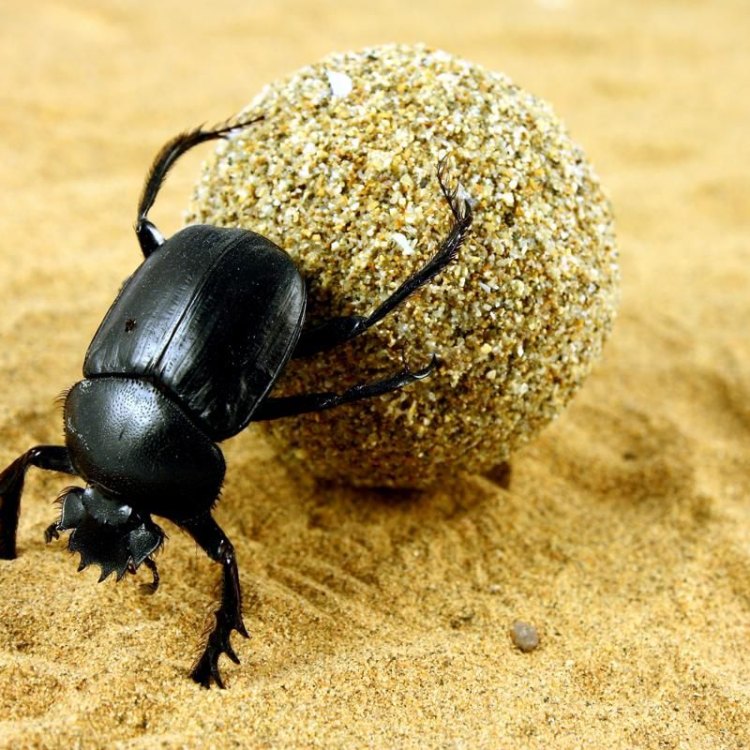
Trogoderma granarium
The Khapra Beetle: A Tiny But Destructive Pest
The Khapra beetle, scientifically known as Trogoderma granarium, may be small in size, only measuring 4mm in length, but it is considered one of the most destructive pests to stored grains. This beetle has caused millions of dollars worth of damage to stored food products and is a major threat to the agricultural industry.The Life of a Khapra Beetle
On average, a Khapra beetle can live for 2-4 months. In its short lifespan, it can cause significant damage to stored grains, especially wheat, barley, and rice PeaceOfAnimals.Com. The female Khapra beetle lays eggs directly into food products, making it difficult to detect infestation until it's too late. The larvae then feed on the food product, causing contamination and spoilage. One female beetle can lay up to 50 eggs at a time, which can hatch within a week in warm conditions.
Reproductive Behavior and Habitat
The Khapra beetle reproduces by laying eggs in food products. These eggs are small, about 0.5mm in length, and are hidden within crevices and folds of the food. The eggs are oval-shaped and pale yellow in color. Interestingly, these beetles have been known to lay eggs in milled grains, meaning that even processed food products are not safe from infestation.
These beetles are mainly found in warm and dry regions, such as the Middle East, Australia, and India King Salmon. They are also commonly found in stored food warehouses and grain storage facilities. Due to their ability to survive in hot and dry conditions, they can easily infest large quantities of stored grains, making them a nightmare for farmers and food producers.
Behavior and Habitat
Khapra beetles are nocturnal creatures, which means they are most active during the night. During the day, they hide in dark crevices and food storage containers. They are solitary insects, meaning they do not live in colonies or social groups. However, their ability to lay a large number of eggs means that their population can quickly multiply, causing a massive infestation if not controlled.
Threats to Agriculture and the Environment
The Khapra beetle poses a significant threat to agriculture and the environment. As mentioned earlier, these beetles are responsible for causing millions of dollars worth of damage to stored grains and other food products. This not only affects the economy but also leads to food scarcity and higher prices for consumers.
Moreover, these beetles can also contaminate stored grains, making them unfit for human consumption. They leave behind their feces, which can contain harmful bacteria and fungi that can cause food poisoning. In severe infestations, the entire stored food supply may need to be destroyed, leading to huge losses for farmers and food producers.
Conservation Status
The Khapra beetle is not currently listed as an endangered species, and its conservation status has not yet been evaluated. However, its impact on the economy and the ecosystem cannot be ignored. Therefore, efforts must be made to control and prevent the spread of this destructive pest.
Humans and the Khapra Beetle
Unlike other insects, humans do not have any use for the Khapra beetle. In fact, we are its primary target, as these beetles feed on the food we produce and consume. They have no predators and are not a food source for any other species, making it challenging to control their population.
Distinctive Features of the Khapra Beetle
One of the most distinctive features of the Khapra beetle is the long hairs on its body, which give it a fuzzy appearance. This is where it gets its scientific name, as "Trogoderma" means hairy skin. These hairs also help in camouflage, making it difficult to spot these beetles among stored grains.
Moreover, Khapra beetles have a uniformly dark brown color, making them blend in with the food products they infest. These small but mighty beetles may be difficult to detect, but the damage they leave behind is unmistakable.
Interesting Facts
The Khapra beetle is not only destructive but also has some interesting facts that make it stand out from other pests. For example, their larvae can survive for up to a year without food, making them incredibly resilient. They are also resistant to many insecticides, making it challenging to control their population.
Another interesting fact is that the United States has placed strict regulations on the import and movement of grains to prevent the spread of this pest. In fact, importing Khapra beetle-infested grains into the US could result in heavy fines and even imprisonment.
Preventing and Controlling Khapra Beetle Infestations
Preventing and controlling Khapra beetle infestations is crucial in protecting food supplies and the environment. The best way to prevent infestations is to practice proper hygiene and cleanliness in food storage areas. Any spills or leaks should be promptly cleaned, and food storage containers should be regularly checked for signs of infestation.
If an infestation is suspected, immediate action must be taken to control and eliminate the beetles. This can be done through fumigation or the use of insecticides specifically designed to target Khapra beetles. However, it is essential to follow safety precautions and use these products as directed to avoid any harm to humans or the environment.
The Role of Technology in Controlling Khapra Beetle Infestations
With the advancement of technology, there have been efforts to develop more efficient and environmentally friendly methods of controlling Khapra beetles. For example, scientists have developed pheromone traps that use the beetles' natural sex hormones to attract and trap them. This method is effective in controlling small infestations and can also be used as a preventative measure.
Moreover, research is ongoing to find biological control methods for Khapra beetles, such as using natural predators or pathogens. These methods are more sustainable and reduce the use of harmful chemicals in controlling infestations.
In Conclusion
In conclusion, the Khapra beetle may be small in size, but its impact on agriculture and the environment is significant. Its ability to infest and destroy stored grains makes it a major threat to the economy and food security. It is essential to take preventative measures and control infestations to mitigate the damage caused by these destructive pests. With the development of new technologies, we can hope for more sustainable and effective methods of controlling Khapra beetles in the future.
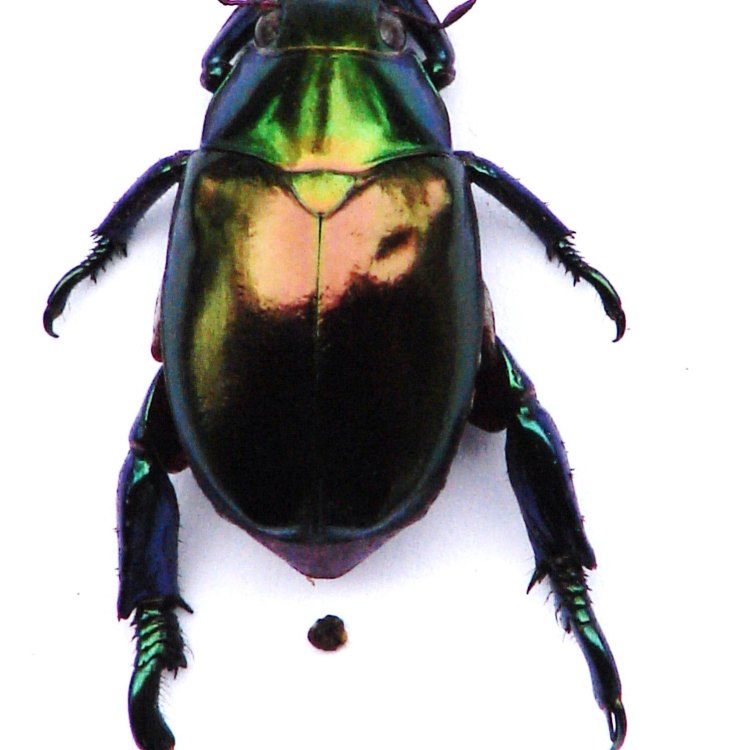
The Infamous Khapra Beetle: A Silent Intruder in Our Food Supply
Disclaimer: The content provided is for informational purposes only. We cannot guarantee the accuracy of the information on this page 100%. All information provided here may change without prior notice.





